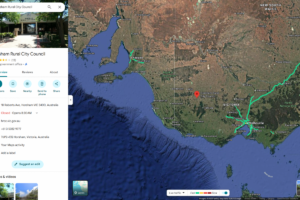
A Senate committee is currently investigating the integrity of information surrounding climate and energy policies in Australia. This inquiry has unveiled disturbing examples of misinformation and disinformation, with submissions ranging from the absurd to the self-serving. Among the submissions, one even bizarrely accuses me of being a 40-year-old funds manager in England with a full head of hair.
However, the most striking example of misinformation may not be directly before the committee but rather in the newly released Liberal Party energy policy. This document appears to amalgamate some of the most misleading memes and talking points from the fossil fuel industry, presenting them as official policy. Titled “Affordable and responsible: The Opposition’s Plan for affordable energy and lower emissions,” it could have been more aptly named “Climate and Energy Myths.”
Renewable Energy and Economic Viability
The Liberal Party’s policy claims that renewables cannot power a modern economy, are too expensive, and will lead to blackouts. These assertions are not only misleading but also contradict the current evidence and expert opinions. Liberal leader Sussan Ley has argued that a single solar PV inverter caused a blackout in Iberia in late April, blaming the incident on an overabundance of wind and solar energy.
In reality, the blackout was unrelated to renewables and was instead a result of grid management protocols. Australia’s own experience with the South Australia blackout in 2016 has led to a more reliable grid, with the state now achieving a world-leading 75 percent share of wind and solar energy. South Australia frequently meets more than 100 percent of its electricity demand with renewables, storing excess power in batteries or exporting it to other states.
“Technology has changed. The market operator has adapted.”
Western Australia, housing the world’s largest isolated grid, has seen wind and solar energy peak at 89 percent without grid issues. This success demonstrates that with appropriate management and the use of batteries, high renewable penetration is feasible.
Cost of Transitioning to Net Zero
The Liberal Party has also propagated the notion that reaching net zero emissions is prohibitively expensive, citing a $9 trillion cost from the Net Zero Australia report. However, this figure has been debunked by the report’s authors, who clarified that the additional cost of achieving net zero is actually $300 billion over 25 years. The $9 trillion figure represents the total investment required, much of which would occur regardless of net zero targets.
“The Coalition’s Cheaper, Better, Fairer Energy plan is far cheaper than Labor’s $9 trillion net zero plan, which would put Medicare and the NDIS at risk.”
This misleading claim is being circulated by Coalition MPs, despite its inaccuracy. The actual financial impact of transitioning to net zero is significantly less daunting than portrayed.
Blackouts and Energy Reliability
The Liberal Party’s policy document suggests that all mainland states on the National Electricity Market will breach reliability standards in the coming years, implying a looming energy crisis. However, the Australian Energy Market Operator (AEMO) forecasts sufficient generation capacity to meet demand, provided planned investments proceed as scheduled.
“AEMO forecasts sufficient generation capacity to meet growing electricity demand within the relevant reliability standards in most regions and years in the next decade.”
The Liberals’ use of selective data omits projects likely to be completed under state and federal schemes, which negates any predicted reliability shortfall. This tactic mirrors annual scare campaigns by conservative media.
Consistency with the Paris Agreement
Despite claims to the contrary, the Liberal Party asserts it can abandon the net zero target while remaining consistent with the Paris climate treaty. This stance contradicts the treaty’s clear mandate for countries to enhance their climate commitments every five years, aiming to limit global warming to 1.5°C.
“The Paris Agreement does not mandate net zero for Australia. Countries choose their own path, their own policies and their own targets.”
In truth, as a wealthy, high-emission nation, Australia is expected to achieve net zero well before 2050. The Liberal Party’s position ignores scientific consensus and international obligations.
The Senate committee’s investigation highlights the critical need for accurate information in shaping Australia’s energy policies. As the nation navigates its energy future, the importance of transparency and truth in public discourse cannot be overstated.
If you wish to support independent media and accurate information, consider making a one-off donation or becoming a regular supporter of Renew Economy. Your support is invaluable.







